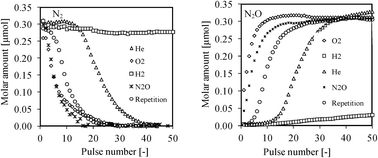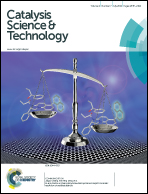Influence of treatment conditions on decomposition activity of N2O over FeZSM-5 with high iron content
Abstract
The influence of treatment on formation and activity of surface oxygen over FeZSM-5 with high iron content was studied by using a transient multipulse technique combined with temperature-programmed desorption (TPD) and steady-state kinetics. All samples after various treatments were characterised by N2 sorption, NH3-TPD, H2-TPR, and DR-UV–vis. Multipulse experiment results showed that the reductive and inert treatments increase the amount of surface oxygen species formed from N2O. However, the oxidative treatment inhibits almost half of the oxygen formation. High temperature treatment increases not only the surface oxygen amount but also steady-state decomposition of N2O. Based on TPD and CO oxidation with surface oxygen, the active oxygen species formed from N2O are desorbed at low temperature and their amounts increase with oxidative and vacuum treatments and decrease with high temperature treatment. Vacuum treatment in a batch system increases the amount of surface oxygen and prevents transformation of active oxygen species to inactive oxygen species.


 Please wait while we load your content...
Please wait while we load your content...